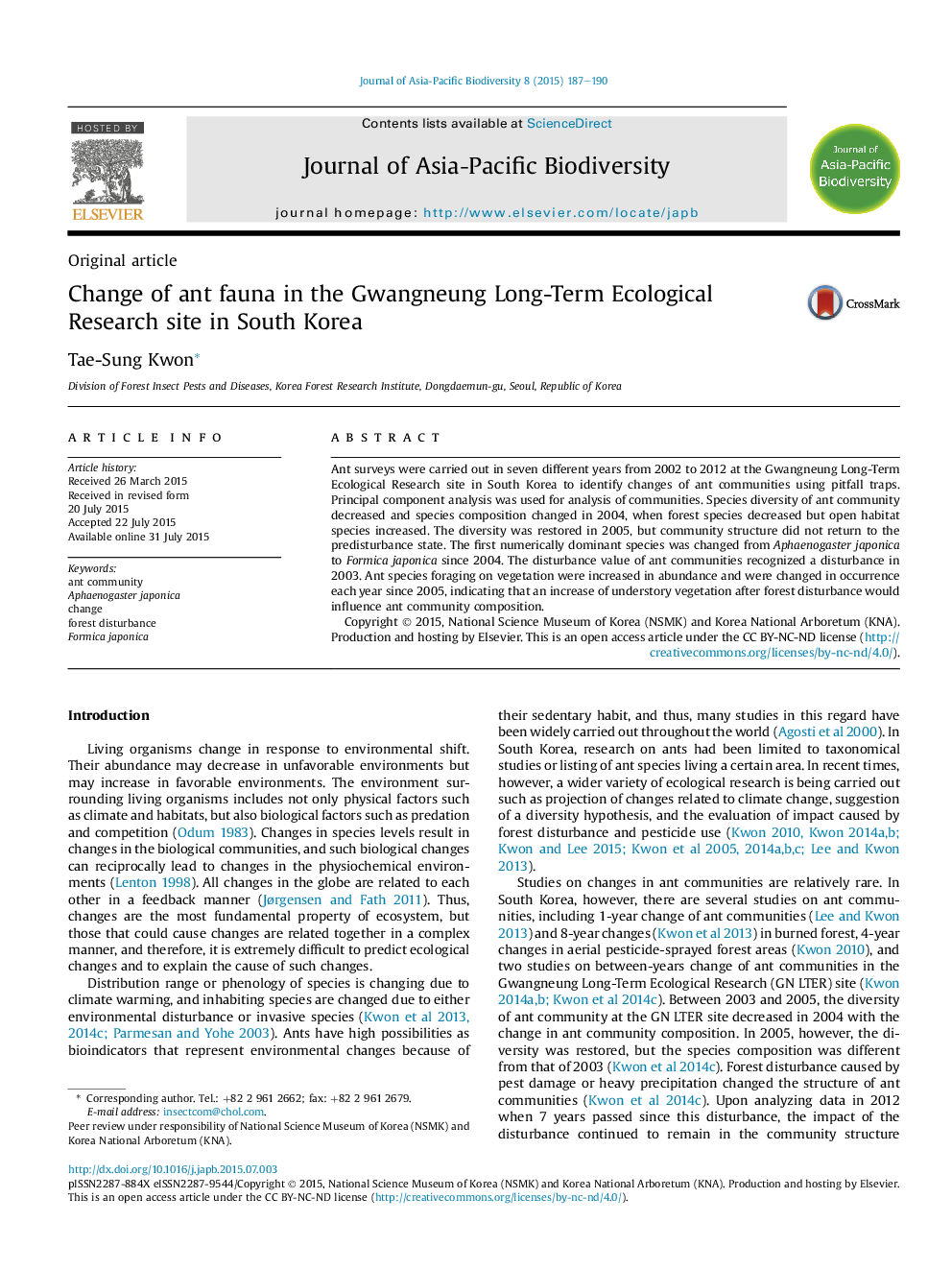| Article ID | Journal | Published Year | Pages | File Type |
|---|---|---|---|---|
| 4395047 | Journal of Asia-Pacific Biodiversity | 2015 | 4 Pages |
Ant surveys were carried out in seven different years from 2002 to 2012 at the Gwangneung Long-Term Ecological Research site in South Korea to identify changes of ant communities using pitfall traps. Principal component analysis was used for analysis of communities. Species diversity of ant community decreased and species composition changed in 2004, when forest species decreased but open habitat species increased. The diversity was restored in 2005, but community structure did not return to the predisturbance state. The first numerically dominant species was changed from Aphaenogaster japonica to Formica japonica since 2004. The disturbance value of ant communities recognized a disturbance in 2003. Ant species foraging on vegetation were increased in abundance and were changed in occurrence each year since 2005, indicating that an increase of understory vegetation after forest disturbance would influence ant community composition.
